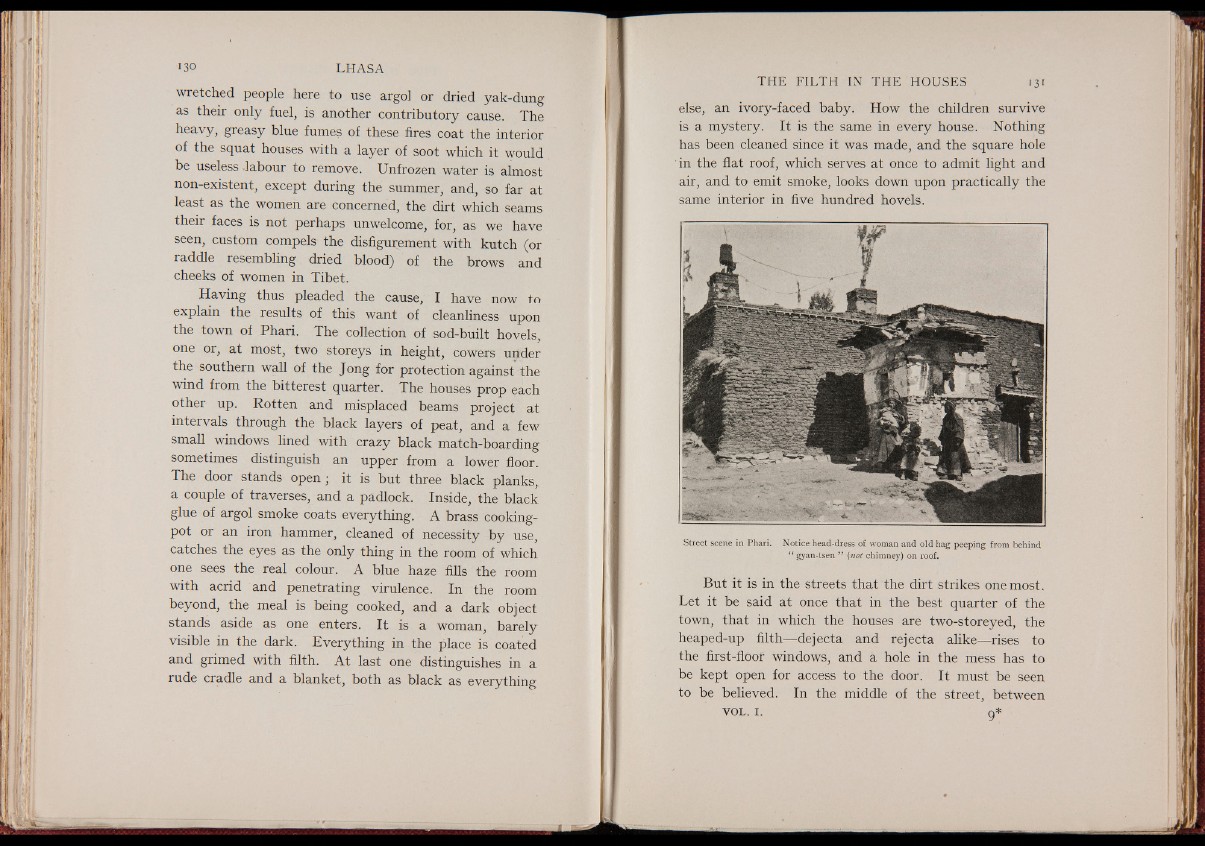
wretched people here to use argol or dried yak-dung
as their only fuel, is another contributory cause. The
heavy, greasy blue fumes of these fires coat the interior
of the squat houses with a layer of soot which it would
be useless .labour to remove. Unfrozen water is almost
non-existent, except during the summer, and, so far at
least as the women are concerned, the dirt which seams
their faces is not perhaps unwelcome, for, as we have
seen, custom compels the disfigurement with kutch (or
raddle resembling dried blood) of the brows and
cheeks of women in Tibet.
Having thus pleaded the cause, I have now to
explain the results of this want of cleanliness upon
the town of Phari. The collection of sod-built hovels,
one or, at most, two storeys in height, cowers under
the southern wall of the Jong for protection against the
wind from the bitterest quarter. The houses prop each
other up. Rotten and misplaced beams project at
intervals through the black layers of peat, and a few
small windows lined with crazy black match-boarding
sometimes distinguish an upper from a lower floor.
The door stands open; it is but three black planks,
a couple of traverses, and a padlock. Inside, the black
glue of argol smoke coats everything. A brass cooking-
pot or an iron hammer, cleaned of necessity by use,
catches the eyes as the only thing in the room of which
one sees the real colour. A blue haze fills the room
with acrid and penetrating virulence. In the room
beyond, the meal is being cooked, and a dark object
stands aside as one enters. It is a woman, barely
visible in the dark. Everything in the place is coated
and grimed with filth. At last one distinguishes in a
rude cradle and a blanket, both as black as everything
else, an ivory-faced baby. How the children survive
is a mystery. It is the same in every house. Nothing
has been cleaned since it was made, and the square hole
in the flat roof, which serves at once to admit light and
air, and to emit smoke, looks down upon practically the
same interior in five hundred hovels.
Street scene in Phari. Notice head-dress of woman and old hag peeping from behind
“ gyan-tsen ” {not chimney) on roof.
But it is in the streets that the dirt strikes one most.
Let it be said at once that in the best quarter of the
town, that in which the houses are two-storeyed, the
heaped-up filth— dejecta and rejecta alike— rises to
the first-floor windows, and a hole in the mess has to
be kept open for access to the door. It must be seen
to be believed. In the middle of the street, between
v o l . H 0 *